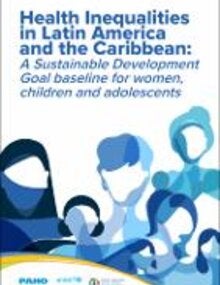The 2030 Agenda for Sustainable Development (2030 Agenda) established in 2015 sets guiding principles to “achieve a better and more sustainable future for all.”
The Sustainable Development Goals (SDGs) included in the 2030 Agenda make explicit what this means by specifying relevant statistical indicators and setting clearly defined targets in them to be achieved by 2030. Given the emphasis on the collection and availability of SDG-related data, it is possible to track universal progress towards the SDG targets. One of the SDGs, SDG 3, includes targets to improve health and well-being.
In general, SDG health-related indicators measure health outcomes and coverage at the country level by employing averages. However, given the nature of the data, inequalities in health outcomes and the access to health services tend to be masked. Since it is important to strive for gains in health and well-being to be equitably distributed among individuals regardless of their wealth, educational attainment, and other factors relating to their social background, it is essential to first identify and quantify existing social inequalities in health.
To this end, this publication provides an overview of social inequalities in several indicators related to the health of women, children, and adolescents in a region deemed as one with high levels of inequality: the Latin America and the Caribbean (LAC) region. In order for it to serve as a baseline for the 2030 Agenda, emphasis is placed on examining these inequalities around year 2014. The analysis suggests that reducing within-country disparities is a priority, as widespread social inequalities in health are identified among LAC countries.
|

